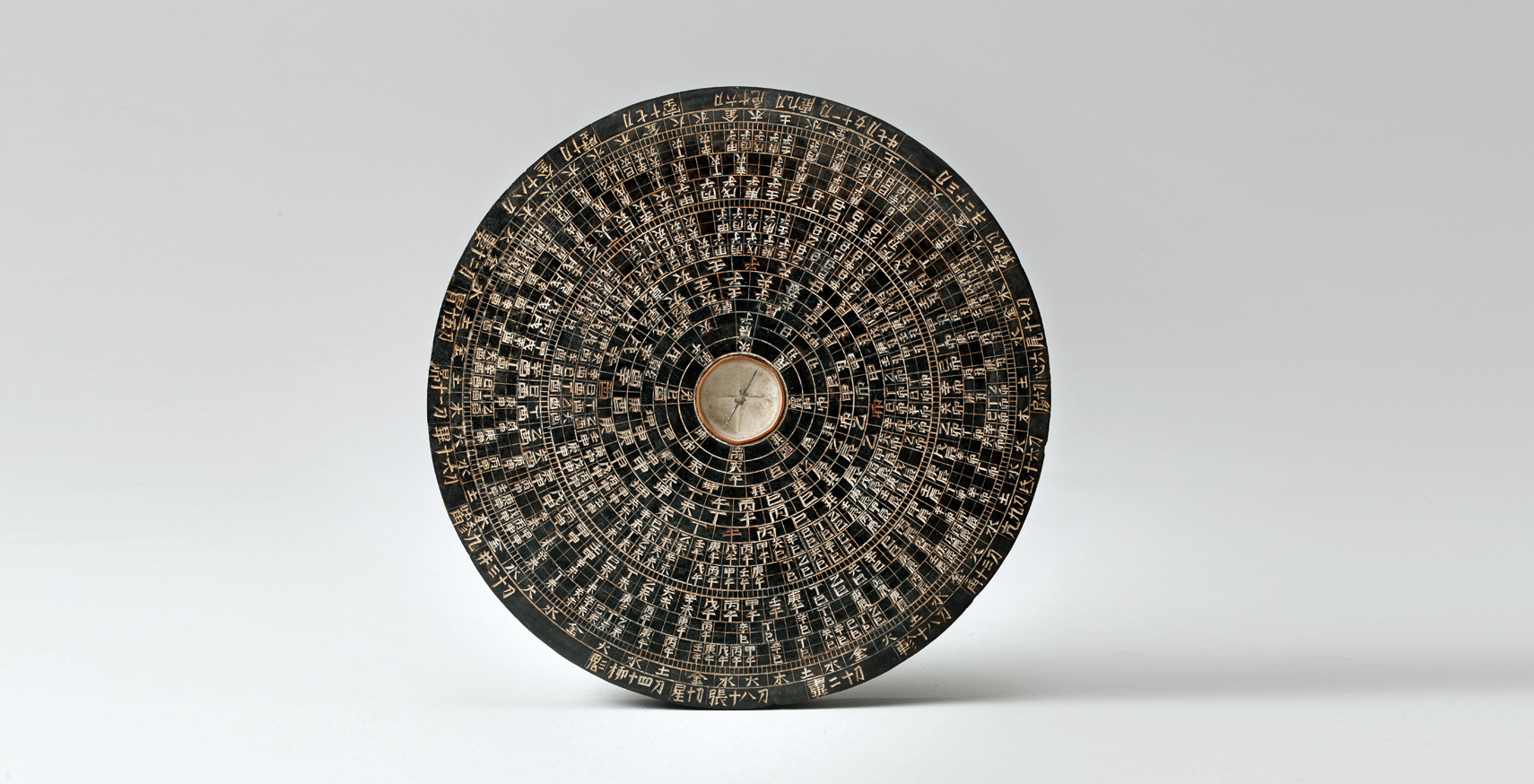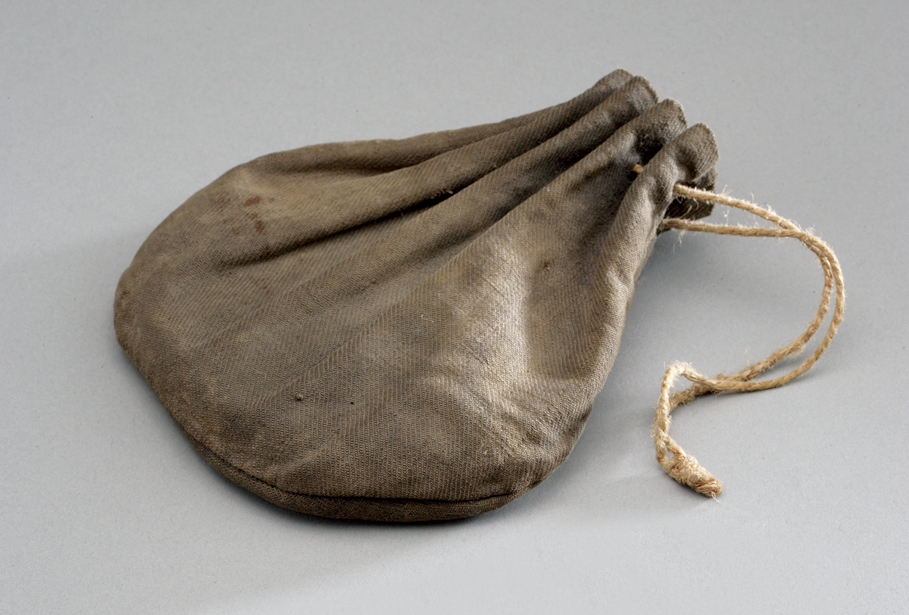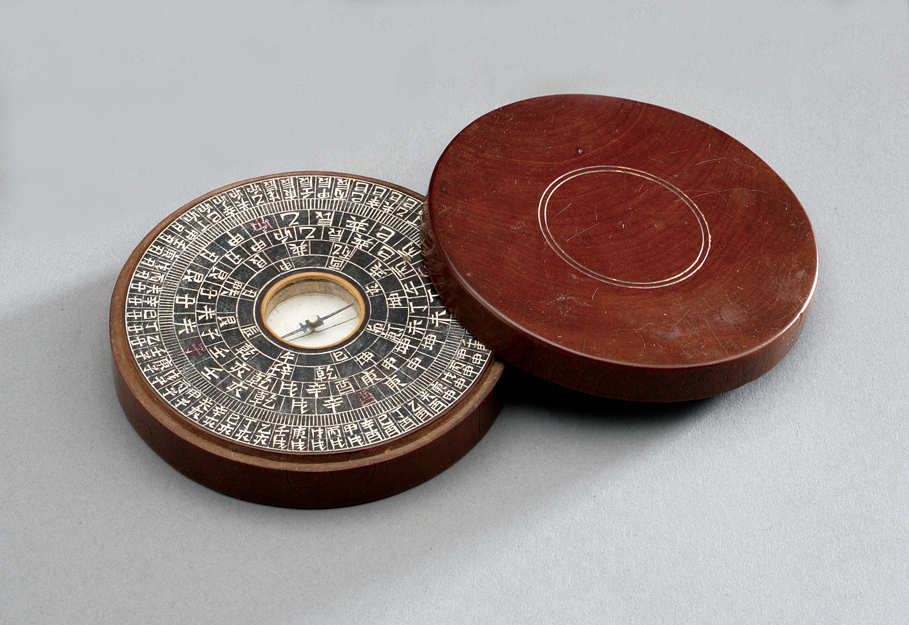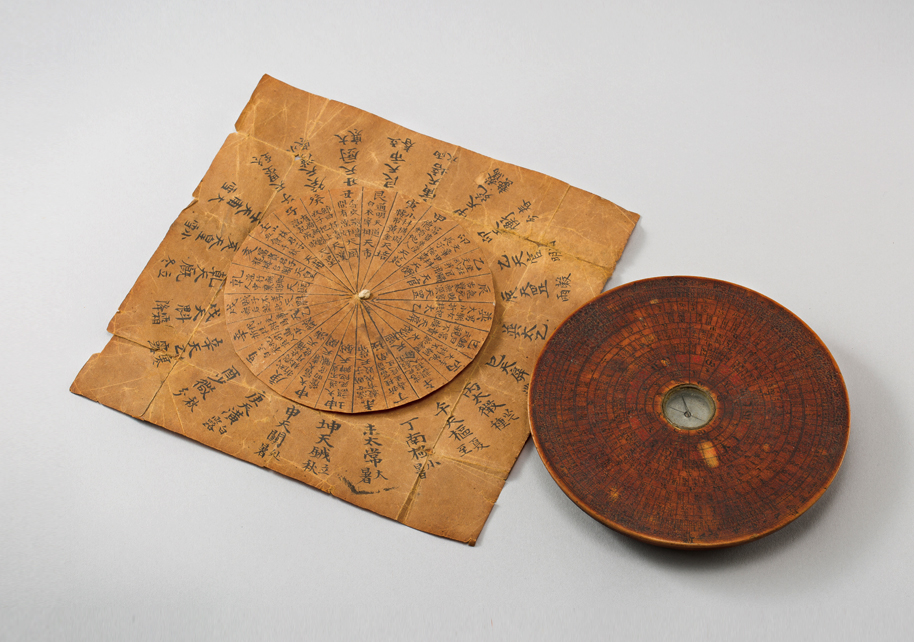October 2021

October 2021
Yundo, a traditional Korean compass, has a very complicated shape compared to the others. This is because it contains not only directions but also the principles and operation of the universe.
Written by
Tim Alper,
contributing writer
Photo Courtesy of
National Folk Museum
of Korea

Creating a yundo is something of a lost art. To understand why, one only needs to look at this device. At its heart is what seems to be a simple, glass-covered compass. But around the outside are what appears to be an almost endless set of concentric circles each marked with small Chinese characters.
Ancestor worship dates back to Korea’s ancient past. The dead were thought to have the power to influence the present and future, and could grant the living fertility and favorable harvests. But to gain help from the dead, early Koreans believed, one needed to take great care with the precise placement of their burial mounds and tombs.


To help the living in their quest to find ideal burial sites for their deceased relatives, Koreans often turned to specialist shamans. These experts used the yundo, or devices similar to it, to help them in their quests.
A royal tomb from the first century excavated in modern times was found to have contained a yundo-like item, an indication that even the ruling class made use of this device, or employed shamans to do so, long before the science of astronomy was born in earnest on the Korean Peninsula.
Surprisingly, however, religious upheaval—with the arrival of Buddhism in the fourth century and the rise of the Confucian Joseon Dynasty in 1392—did not spell the end of the yundo. Instead, the device appears to have diversified and even thrived. A portion of the Annals of the Joseon Dynasty penned in 1742 makes reference to the yundo. The people of Joseon prized science above superstition, but believed that astrology and geomancy were also near-exact sciences that could be mastered with enough study.
Using the yundo, Joseon-era geomancers took over from their shaman predecessors, using the device to place tombs. Almost certainly, as the geomancers added layers of complexity to the device’s outer rings, these devices inspired a gamut of compasses and navigation tools that helped equip sailors, naval officers and traders in the golden years of the dynasty.
The Confucians were firm believers in the importance of Feng Shui, and some of the characters on the yundo correspond to values found in Feng Shui-related theory, alongside Yin-Yang, Korean elemental theory, Korean zodiac-related characters and the 24 solar terms.
In the later years of the Joseon Dynasty, the yundo became something of a conversation piece for members of the intelligentsia. Scholars and civil servants would often keep an ornamental piece attached to the bottom of the fans they carried around with them—where passers-by would be very likely to notice.
During the Japanese Colonial Period (1910–1945) and the ensuing Korean War (1950), yundo production went into almost terminal decline. In the ensuing period, yundo pieces were largely shunned—as were most other items linked to animism and geomancy. The craft of making these devices almost died out completely.
Despite the postwar industrial drive, one small bastion of traditional yundo production remained: Gochang, a small coastal county in Jeollanam-do province. This, historians think, was once the yundo production industry’s center of gravity thanks to a unique local landmark: a turtle-shaped rock with a groove that points due East to one side and due West to the other.
In days gone by, artisans would bring their yundo pieces here for their final tests: To see if their creations indeed pointed to the magnetic North. As such, it made sense for full-time craftspeople to be based in this area.
Crafting a yundo according to the Gochang tradition is far from simple. The base of the device is made from jujube wood, often from centuries-old trees. The harvested wood must be dried for up to a decade before artisans can work with it. Then, without making use of modern devices like jigsaws, they carve wooden pieces into a circle.


This is washed with calligraphy ink from ink tones to create a jet-black background. The Chinese characters are then carved onto the surface using a thin iron instrument. Next, artisans grind a rare form of white jade into a powder. They then dip the piece into this powder. The jade powder lodges into the grooves, giving each Chinese character a radiant hue.
This is the method used by Kim Hee-soo, a Gochang native who turned his back on a life in the capital, where he worked for a large pharmaceutical and construction company. He returned to his hometown to rediscover the art of yundo-making. It is a skill that his father before him, grandfather and generations of the Kim family carefully passed on to their children.
And at its heart is a remarkable rock that has been in the family for 300 years and helps Kim complete the last vital stage of yundo creation: a magnetic meteorite.
The magnetic power of the meteorite is so strong that a needle attached to it for a single day can keep a yundo pointing to the Magnetic North Pole for a lifetime. The needle is carefully placed at the device’s center and finally covered with protective glass.
The yundo is still relatively unknown to most Koreans. But a newfound desire to rediscover the inventions that helped shape modern Korea—and Kim’s zeal for keeping the craft alive—could help spark a renaissance for this quite remarkable item.